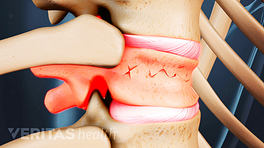While it receives a lot of attention in the media, still few people understand how prevalent osteoporosis and related fractures—which bring painful disability—truly are, especially within the high risk population. In the U.S., about 8 million women and 2 million men have osteoporosis, and another 34 million Americans have low bone mass. In total, these 44 million people represent 55 percent of the people aged 50 and older in the United States. After age 50, one in every two women and one in every four men will sustain some type of osteoporosis-related fracture.1
Osteoporosis is a condition marked by low bone mass (a thinning of the bone), which can lead to a weakening of the bone architecture and increased susceptibility to fracture (usually of the hip, wrist and/or spine). In the spine, fractures can lead to chronic pain, decreased physical function, spinal deformity (e.g. dowager’s hump), social isolation, and, in rare cases, complications that can cause death. Spinal fractures from osteoporosis are quite common, with an estimated 700,000 compression fractures occurring each year.1
Unlike many other common causes of back pain, osteoporosis and associated spinal fractures (also called “vertebral compression fractures” or “vertebral fractures”) are largely preventable.
This article focuses on the most important action steps for people at risk for osteoporosis, those with a diagnosis of osteopenia (low bone density, the precursor to osteoporosis), or those already diagnosed with osteoporosis
References
- 1.National Osteoporosis Foundation – Prevention, Prevalence. www.nof.org. Accessed 5/19/06.








